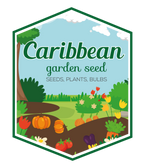
Peanut Seeds - Untreated (out Shell) Spanish Peanuts
- Get free shipping to lower 48 states on orders $54.95+ (Most Items), excluding live plants, plant bulbs, and black plastic nursery crate.
- Most orders are processed by the next day !
- Safe Seed Pledge
- Select your desired size and/or color from the available options.
Peanut, Spanish ,organic seeds.Hand Harvest !
This untreated Spanish Peanut seed variety yields large and plump peanuts in just 100 days. They are rich in protein and make a delicious snack when roasted. You can even make your own homemade peanut butter using these peanuts, which are also commonly found in supermarkets. They are a popular choice for kids' school projects, making them a perfect and nutritious option for the whole family.
Plant Spanish peanut seeds directly in ground after last frost, with a soil temperature of at least 65°F. Space seeds 6-8 inches apart in rows 2 feet apart, burying them 1-2 inches deep. ensure well-draining, slightly acidic soil, provide consistent moisture, and "hill" the soil around the plants as they grow, harvesting when the leaves begin to yellow; be sure to choose an early-maturing Spanish peanut variety if growing in a cooler climate.When the plants are about 1 foot tall, hill the earth around the base of each plant. Long, pointed pegs (also called peduncles) grow from faded flowers and then push 1 to 3 inches down into the soil beside the plant. A peanut will form on the end of each peg. Lay down a light mulch, such as straw or grass clippings, to prevent the soil surface from crusting so that the pegs will have no difficulty penetrating the soil.
One inch of water a week is plenty for peanuts. Being legumes, peanuts supply their own nitrogen, so avoid nitrogen-rich fertilizers, which encourage foliage rather than fruits. Well-prepared soil will provide all the nutrients the plants need.
Harvesting
The crop is ready to harvest when leaves turn yellow and the peanutsâ inner shells have gold-marked veins, which you can check periodically by pulling out a few nuts from the soil and shelling them. If you wait too long, the pegs will become brittle, and the pods will break off in the ground, making harvesting more difficult. Pull or dig the plants and roots when the soil is moist. Shake off the excess soil, and let plants dry in an airy place until the leaves become crumbly; then remove the pods. Unshelled peanuts, stored in airtight containers, can keep for up to a year.
LET OUR CUSTOMER SPEAK FOR US

![[Seeds] - Caribbeangardenseed](http://caribbeangardenseed.com/cdn/shop/files/gift-card-gift-card-1_1024x1024_dfa857db-9150-4315-a362-7f0bb3fb9c47_60x28.png?v=1722895789)








